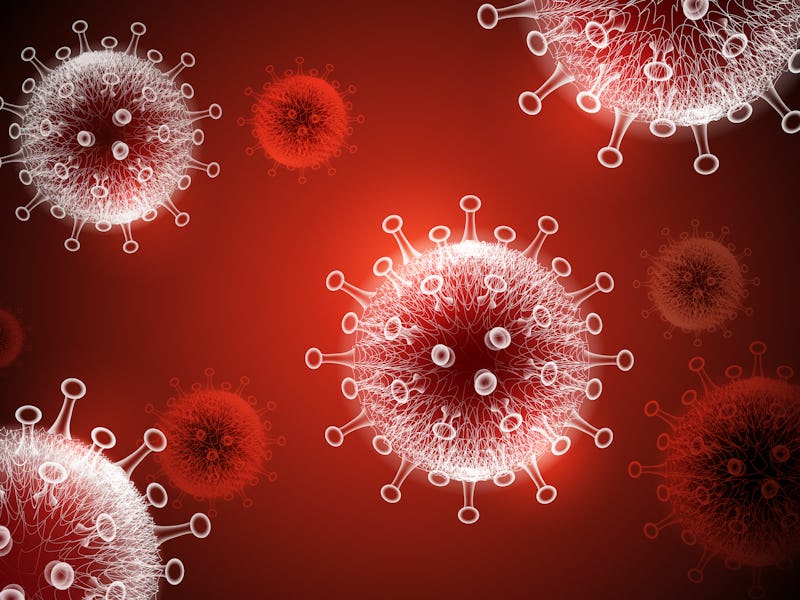Scientists engineer decoy cells to fight Covid-19 for you
This study is like a crash course on how to trick a virus.

As scientists around the world race to develop, test, and manufacture vaccines to fight Covid-19, others look to technology to help tackle the disease.
Antibody therapies that temporarily introduce virus-fighting antibodies to your body are one solution. But in a paper published this week in the Proceedings of the National Academy of Sciences, researchers propose taking a different tack — one that games the virus itself, instead of arming the immune system.
Rather than antibodies, the new approach would flood the body with "decoy" cells to take the brunt of the virus's attack and neutralize it without putting the person's actual cells in harm's way.
The scientists tested the approach in a mouse model and human cells infected with the Covid-19 virus and an inflammatory model mimicking the virus' "cytokine storms." Fooled by the decoy cells, the damage wreaked by the virus on the lungs and immune system was significantly lessened.
When it comes to attracting SARS-CoV-2, these decoys have the best of both worlds.
"By competing with host cells, these nanodecoys efficiently adsorb viruses and inflammatory cytokines," the authors write in the study. "These two functionalities allow effective intervention of viral infection and its associated immune disorder, presenting a promising therapeutic strategy for COVID-19 and other potential epidemics."
How to trick a virus — To manufacture the nanoparticles, the researchers followed a three-step process. First, they genetically engineered the spike proteins targeted by the novel coronavirus, known as ACE2 receptors, onto an embryonic immune-system cell. Next, they collected pieces of the engineered cell's membrane and pieces from another type of immune cell, called a myeloid. Finally, these two cell membrane components were fused together to create what the researchers call a "nanodecoy."
These engineered particles look like ideal targets for the coronavirus. And for a typical human cell, being extra appealing to SARS-CoV-2 would be detrimental. But for the decoys, this is all part of the plan. These nanodecoys are designed to draw the virus in, bind to it, and then neutralize it in order to save the other cells.
When exposed in the lab to SARS-CoV-2, the virus that causes Covid-19, and pseudo-viruses designed to replicate other coronaviruses' effects, the researchers found that their decoy particles significantly inhibited viral replication and infection.
It is important to note that this study is preliminary. A key part of the experiment — testing the decoys as a means to decrease acute lung inflammation — was conducted in a mouse model, but the results suggest the therapy could significantly suppress the downstream affects of Covid-19 on the lungs and immune system. This is especially important because, currently, few therapeutics exist to target and treat acute pneumonia as a result of a Covid-19 infection, the researchers say.
The approach may prove useful for combating other coronaviruses, the researchers say. These viruses all have a similar physical structure, so it may be possible to customize and scale a therapeutic approach like this in the future to treat similar outbreaks as well.
These decoy nanoparticles are able to bind to and neutralize viruses like SARS-CoV-2 before they can harm the body.
The authors also report that the mice experienced no serious side effects as a result of inhaling the nanoparticles.
What's next — This study offers a blueprint for how a new kind of treatment strategy to help people around the world fight not only SARS-CoV-2, but future viruses as well.
"Over the past 240 years, there have been several global epidemics caused by emerging and reemerging viruses," write the authors. "Each time, the lack of available drug or vaccine has greatly hindered effective protection against such an emerging viral threat. Thus, it remains a grand challenge and is of paramount importance to rapidly develop therapeutic strategies for ongoing COVID-19 or future potential epidemics."
Abstract: The COVID-19 pandemic, caused by severe acute respiratory syndrome coronavirus 2 (SARS-CoV-2), has highlighted the urgent need to rapidly develop therapeutic strategies for such emerging viruses without effective vaccines or drugs. Here, we report a decoy nanoparticle against COVID-19 through a powerful two-step neutralization approach: virus neutralization in the first step followed by cytokine neutralization in the second step. The nanodecoy, made by fusing cellular membrane nanovesicles derived from human monocytes and genetically engineered cells stably expressing angiotensin converting enzyme II (ACE2) receptors, possesses an antigenic exterior the same as source cells. By competing with host cells for virus binding, these nanodecoys effectively protect host cells from the infection of pseudoviruses and authentic SARS-CoV-2. Moreover, relying on abundant cytokine receptors on the surface, the nanodecoys efficiently bind and neutralize inflammatory cytokines including interleukin 6 (IL-6) and granulocyte−macrophage colony-stimulating factor (GM-CSF), and significantly suppress immune disorder and lung injury in an acute pneumonia mouse model. Our work presents a simple, safe, and robust antiviral nanotechnology for ongoing COVID-19 and future potential epidemics.